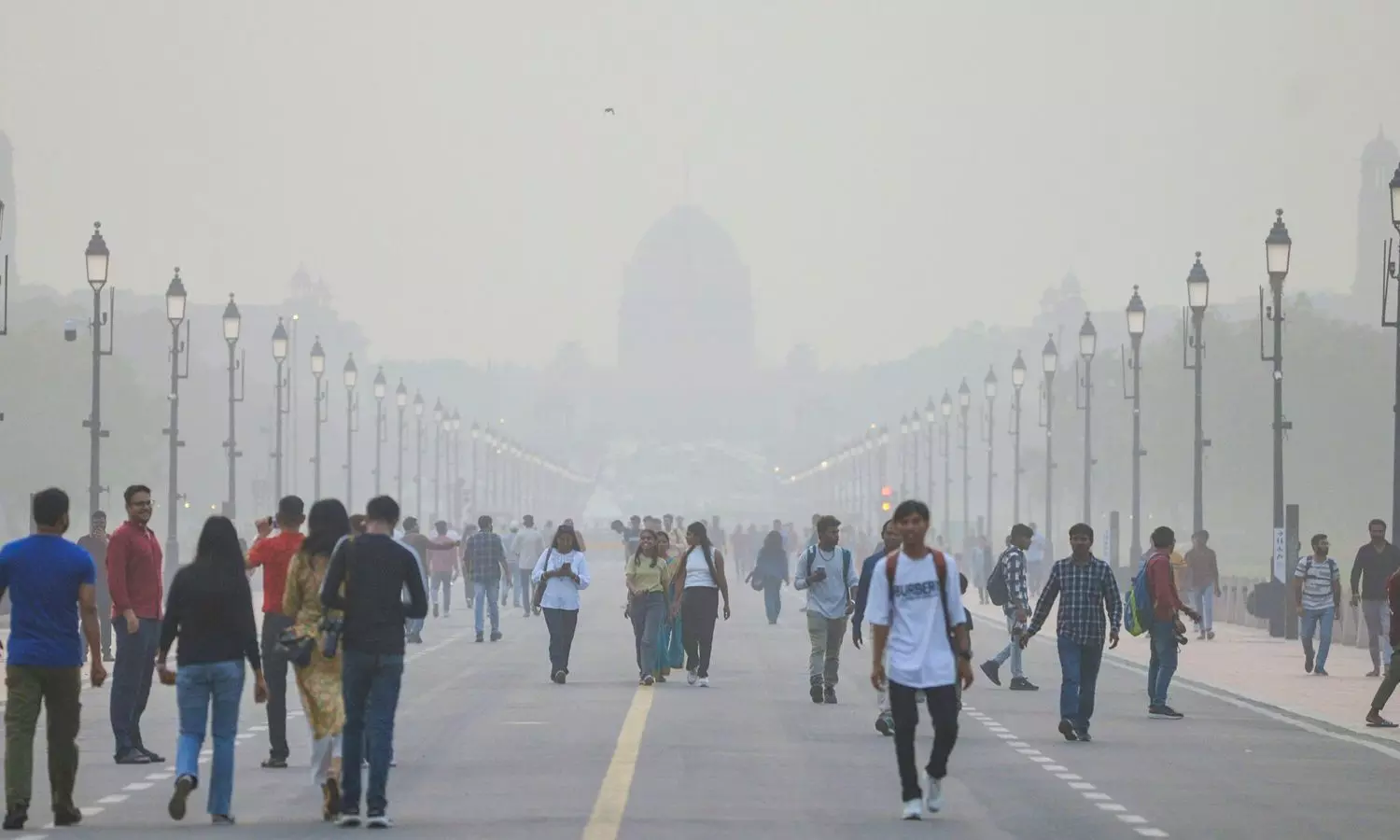Delhi Air Quality Today: National Capital's AQI Deteriorates to 'Very Poor' at 307
As per the CPCB, a 'poor' AQI can lead to breathing discomfort, while 'very poor' levels heighten the risk of respiratory illnesses.
Delhi Pollution

Delhi saw dense fog today, with air quality deteriorating to the "very poor" level, reflected by an Air Quality Index (AQI) score of 307, as reported by SAFAR-India. Residents, especially the elderly and individuals with respiratory ailments, face heightened danger when air quality declines.
The AQI scale classifies air quality into six categories: 0-50 is "good," 51-100 is "satisfactory," 101-200 is "moderate," 201-300 is "poor," 301-400 is "very poor," and 401-500 is "severe." The Central Pollution Control Board (CPCB) indicates that a 'bad' Air Quality Index (AQI) might lead to respiratory issues, and 'very poor' levels increase the likelihood of respiratory illnesses.
The rise in pollution can be attributed to several sources, including stubble burning in neighbouring states. In September, stubble-burning incidents in Haryana rose by 19.8%, whilst in Punjab they fell by 28.7%.
In response to inadequate air quality, the Delhi Pollution Control Committee has instituted a comprehensive prohibition on the manufacture, storage, sale, and utilisation of all varieties of firecrackers in the national capital till January 1. This study aims to mitigate pollution during winter when hazardous particulate matter concentrations often increase due to stubble burning and adverse meteorological conditions.
The Commission for Air Quality Management has implemented Stage I of the Graded Response Action Plan (GRAP), a series of emergency measures designed to mitigate air pollution in the National Capital Region (NCR) according to its severity. These measures encompass limitations on construction activity, traffic regulation, and industrial emissions.
In addition to air quality concerns, the Yamuna River was observed to be covered in a dense layer of white foam. Environmentalists caution that this hazardous foam, primarily composed of ammonia and phosphates, presents considerable health risks, especially regarding respiratory and dermal conditions. These pollutants typically infiltrate water bodies due to untreated industrial effluents and agricultural runoff, resulting in foamy pollution that intensifies around specific times of the year, such as festivals.
Experts stress that the combination of airborne and aqueous pollutants may aggravate respiratory and dermal issues, necessitating vigilance under these hazardous settings.

